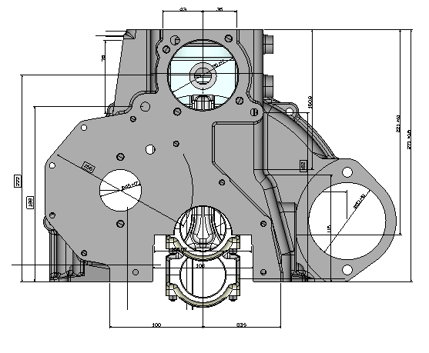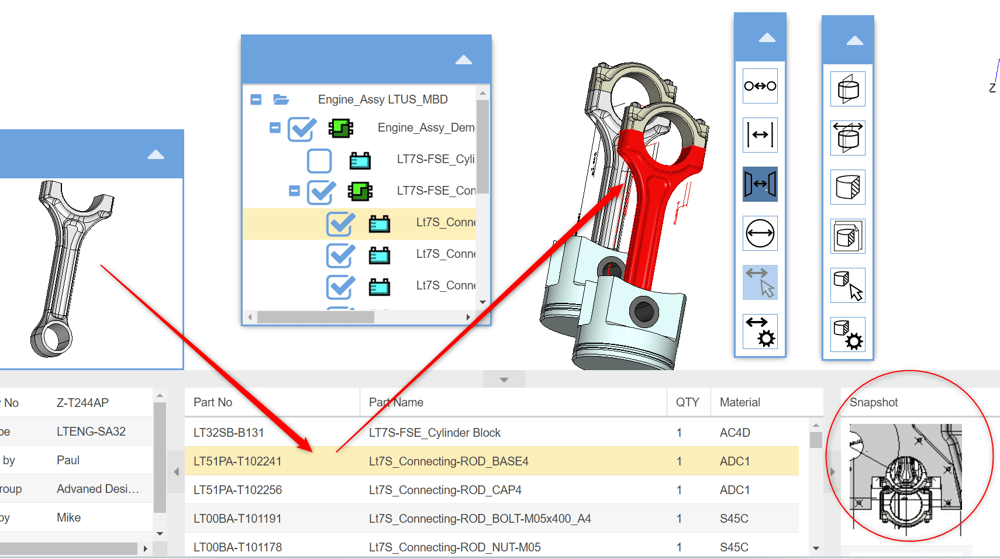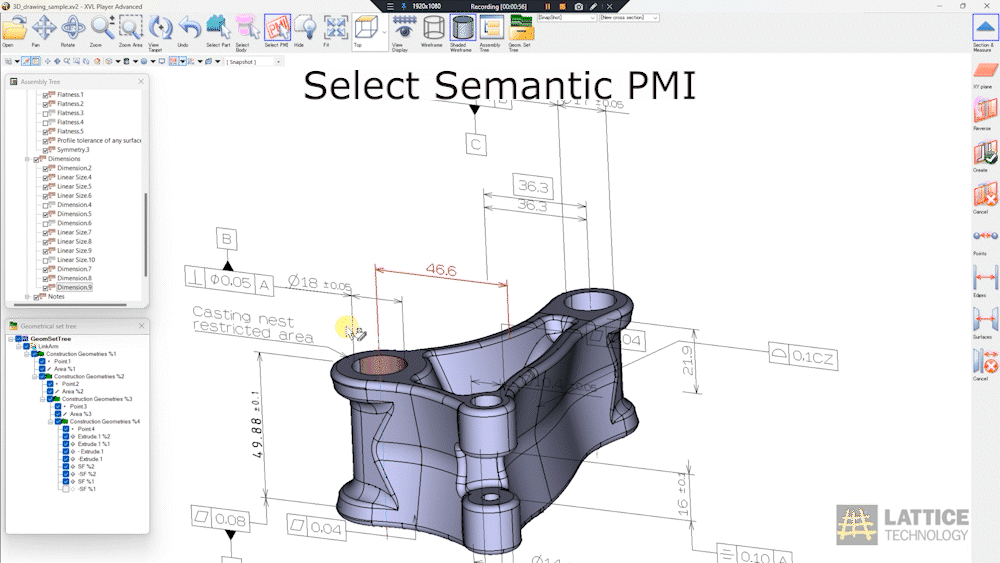3D Snapshots - What Are They & How Can They Benefit Your Manufacturing Process
A 3D Snapshot using XVL from Lattice Technology Conveys Information Found on a 2D Drawing - BUT, MUCH MORE - It is Interactive 3D with Links & Powerful Tools
What is a 3D Snapshot?
The 3D Snapshot is interactive 3D. The initial view is set by the author and captures the model in a specific state (e.g., orientation, assembled, not assembled, etc.). Although the initial view is set by the author, the user (consumer) can reposition the model. And, the interaction doesn’t stop there, for instance, the user can do the following, all in interactive 3D:
- Move or create cross-sections
- Perform accurate measurements
- Interact with the parts list that is associated with the 3D geometry
2D Drawing vs. 3D Snapshot
- 2D Drawing
Below is what you might see on a typical 2D drawing. It can be a little confusing, and this one does not have that many details.

- 3D Snapshot
What if the user receiving the 3D Snapshot could create their own views? Now, wouldn't you prefer something like this that is fully interactive? The user can manipulate the model any way they need, and the dimensions (and PMI) stay attached and visible.
And what's more. There are tools on the 3D drawing for additional exploration and viewing; from measuring to cross-sectioning to identifying a part number from the model itself (and vice versa).
Includes ALL Product Manufacturing Information (PMI)
PMI is created in the native CAD system and can be included with the 3D Snapshot – including Semantic PMI. PMI may contain the following:
- Geometric Dimensions & Tolerances (GD&T)
- Bill of Materials (BOM)
- Surface finish
- Weld symbols
- Material specifications
If the underlying 3D CAD data is modified, the updated geometry and PMI data are transferred from the native CAD system to the XVL model for automatic updating with oversight. This saves a lot of time and ensures the 3D Snapshot remains accurate.
Annotations in XVL
In addition to the metadata from the native CAD system, the author of the XVL file can add annotations which will also be included in the 3D Snapshot.
Advantages of 3D Snapshots Over 2D Drawings
Using 2D drawings in manufacturing has several limitations, which can lead to various problems and inefficiencies.
In this section, I will present the limitations/challenges of 2D drawings and contrast them with the benefit of using a 3D Snapshot directly underneath.
- Time Savings
2D drawings must be individually made and require detailed work. While the 3D CAD system aids this process, they still must be manually created, and the designer needs to decide what information should be included for downstream use cases.
3D Snapshot: While they are still created individually, they are quick to produce and automatically carry forward information from the native CAD systems (e.g. PMI) and annotations created in XVL. And unlike 2D drawings, the receiving user can interrogate the actual model, for example, for alternate views, cross-sections, and measuring which might have been missed when creating a 2D drawing.
- Visualization
2D can be unclear regarding complex geometries, tolerances, and the relationship between different components. Expressing complex design concepts, especially those involving curved surfaces, non-standard geometries, or intricate shapes, can be difficult with 2D drawings.
3D Snapshot: It is the virtual product, so misinterpretation is all but eliminated. It can be fully examined virtually, disassembled or assembled and even cross-sections can be applied.
- Lack of Integration
2D drawings are typically separate from the 3D CAD models. When a design changes for an ECO, the previous 2D drawing is obsolete, and it must be remade.
3D Snapshot: An XVL 3D Snapshot is integral with the XVL model. And the XVL model is linked to the original native CAD data. If there is a design change performed in the native 3D CAD system, here is what happens to ensure the 3D Snapshot is updated:
- The author of the 3D Snapshot is notified that there has been a change in the native CAD
- The author can view the change in 3D and decide what action to take in XVL, e.g. accepting the change, modifying annotations/work instructions, etc.
- Data from the native CAD system like PMI are automatically updated and the author can manually change any annotations in XVL that need to be updated.
Summary
3D snapshots provide a realistic and accurate representation of the product, making it easier for stakeholders to visualize the final product, understand its design intent, and identify potential issues before production begins.
Not only is it easier for stakeholders to understand a 3D Snapshot, but they are also quick to create and maintain a linkage to the native CAD so they can be quickly updated when an Engineering Changer Order (ECO) occurs.
Want to Learn More?
Demo 3D Snapshots for yourself. Visit this page XVL Web3D Manager, and you will find multiple interactive demos with 3D CAD data, hosted on Amazon Web Services.
- Look for the Interactive Web3D Demos section
Send us your question by following the link below.

